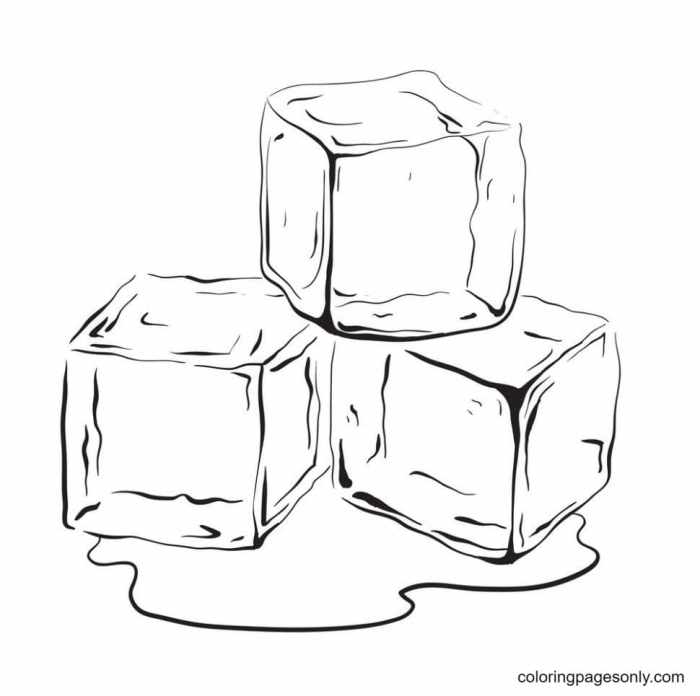Impact of Food Coloring on Icing Consistency

Adding food coloring to icing – Just as a painter carefully considers the properties of their pigments, so too must the baker understand how food coloring interacts with their icing. The seemingly simple act of adding color can profoundly affect the final texture and outcome of your creation, a testament to the delicate balance required in culinary artistry. Understanding this interaction is key to achieving the perfect consistency and a truly satisfying result.
Adding food coloring to icing is a fun way to customize your baked goods! For inspiration on vibrant color combinations, check out these awesome cartoon food coloring pages ; they’re perfect for visualizing your next icing masterpiece. Then, carefully add your chosen colors to your icing, mixing until you achieve your desired shade. Remember to start with a small amount of food coloring and add more gradually!
The amount of food coloring added to icing directly impacts its texture. Too little, and your color may be weak or uneven. Too much, and you risk altering the icing’s fundamental properties, leading to unexpected challenges. This is not merely a matter of aesthetics; it’s about achieving the desired consistency for piping, spreading, or creating intricate decorations. Consider this a spiritual journey of precision and balance, where every drop of color holds significance.
Food Coloring’s Effect on Icing Texture and Consistency
Different types of icing react differently to food coloring. Royal icing, for example, is known for its firm consistency. Adding excessive liquid food coloring can thin it out significantly, making it difficult to pipe intricate designs. Conversely, buttercream, already a softer icing, might become overly runny with too much liquid color. Powdered food coloring, on the other hand, generally poses less of a consistency risk but may require more thorough mixing to avoid streaks or uneven coloration.
The key is mindful addition and careful observation of the icing’s response. This requires patience and a keen eye, much like a sculptor patiently chiseling away at their masterpiece.
Addressing Consistency Problems
If your icing becomes too thin after adding food coloring, you can often remedy the situation by adding more powdered sugar, one tablespoon at a time, while mixing thoroughly. This is a gentle act of restoration, bringing balance back to your creation. For icing that’s too thick, a small amount of milk or water (depending on the icing type) can be added gradually, but remember that this can impact the color intensity.
Each addition should be meticulously measured and followed by thorough mixing, akin to the careful nurturing of a growing plant.
Food Coloring’s Impact on Icing Drying Time
The type of food coloring can also affect how quickly your icing dries. Some liquid food colorings contain additional ingredients that might slightly prolong the drying time. This is an important consideration, particularly for projects requiring precise detailing or immediate stacking of layers. Understanding this nuance allows you to plan your work accordingly, ensuring that each step is timed perfectly, a reflection of mindful preparation.
Troubleshooting Consistency Issues, Adding food coloring to icing
Consistency problems are opportunities for growth and refinement. Viewing challenges not as setbacks but as lessons in precision, allows for continued improvement in your craft. Here are some helpful guidelines:
- Always add food coloring gradually, mixing thoroughly after each addition.
- Use a toothpick or small knife to incorporate small amounts of color, ensuring even distribution.
- If using liquid food coloring, consider using gel food coloring instead for less impact on consistency.
- For extremely vibrant colors, consider using multiple thin coats of color instead of one thick application.
- Remember that different brands of food coloring can have varying consistencies and water content, so experiment to find what works best with your chosen icing.
Visual Examples of Icing Colors: Adding Food Coloring To Icing

The journey of creating visually stunning icing is a testament to the artistry within us all. Just as a painter blends hues to evoke emotion, so too do we manipulate color in our icing, transforming simple sweetness into a masterpiece. Let us explore the captivating world of colored icing, understanding how different factors contribute to its final visual impact.
This understanding is not just about technique; it’s about embracing the creative spirit within, allowing our inner artist to shine through.
Icing Color Variations with Different Food Coloring Amounts
The amount of food coloring profoundly impacts the final appearance of your icing. A tiny drop of red gel coloring might create a delicate blush pink, offering a subtle, almost translucent quality. Increasing the amount intensifies the color; a deeper, more saturated red emerges, becoming richer and more opaque. Similarly, a single drop of vibrant blue might yield a pale sky blue, while adding more transforms it into a deep, almost regal sapphire.
The sheen can also vary; a lightly colored icing might retain a subtle gloss, while a heavily colored one may appear slightly matte depending on the type of food coloring and icing base.
Lighting’s Influence on Icing Color Perception
Light, the very essence of visibility, plays a pivotal role in how we perceive the color of our icing. Under warm, incandescent lighting, colors appear richer and warmer; a vibrant red icing might appear almost crimson. In contrast, under cool, fluorescent lighting, colors appear more subdued and perhaps slightly cooler; that same red might seem less intense, possibly leaning towards a more scarlet tone.
Natural daylight offers a balanced perspective, revealing the true color most accurately, but even then, variations in sunlight’s intensity can subtly alter the perceived shade. Consider the time of day – the soft, diffused light of dawn will differ from the bright, harsh light of midday.
Gel vs. Liquid Food Coloring Appearance Comparison
Gel and liquid food colorings offer distinct visual results. Gel colorings, due to their concentrated nature, tend to produce more vibrant, intensely saturated colors. They often add less moisture, resulting in a smoother, less diluted icing consistency and a potentially more intense sheen. Liquid food colorings, on the other hand, are more diluted, often requiring a larger amount to achieve the same color intensity as gel.
They can sometimes slightly alter the icing’s texture, making it slightly thinner. The final sheen may be slightly less pronounced compared to gel-colored icing. The difference is subtle yet significant for the discerning eye, adding a layer of complexity to our creative choices. Choosing between gel and liquid food coloring is a personal preference, each offering its unique visual characteristics.
FAQ Summary
Can I use too much food colouring?
Yes, definitely. Overdoing it can lead to a seriously off-putting taste and a weird texture. Start small and add more gradually.
How long does coloured icing last?
That depends on the type of icing and food colouring used, plus storage conditions. Properly stored, it should last a good few days, but it’s always best to check for any signs of spoilage before tucking in.
What if my icing is too runny after adding food colouring?
Adding more powdered sugar should thicken it up. If it’s still too thin, pop it in the fridge for a bit to firm up.
My icing is lumpy! What gives?
Make sure you’re adding the food colouring gradually and mixing thoroughly. Lumps usually mean inadequate mixing.
